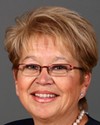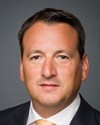Thank you, Madam Chair.
Before I start, I'd like to acknowledge that we are on Lac Seul First Nation traditional territory. I thank you. And I'd like to thank our witnesses for coming today and for the important work they do.
Chief Toulouse, obviously you've had an opportunity to visit the great Kenora riding on a number of occasions for some exciting projects, which, by your own admission, represent important steps forward on some files that needed to be addressed. I appreciate your leadership and I thank you for that.
I'd like to welcome my colleagues to the great Kenora riding. At over 326,760 square kilometres, we're almost the size of Germany. We have 25 isolated first nations communities that have to be accessed by air. We have an additional 17 first nations communities here that lie in and around four municipalities along the Trans-Canada Highway, here in Sioux Lookout and Red Lake.
I would like to provide a little bit of personal history, which I think is important in the context of why I was looking forward to coming here. I have in fact been a nurse who has worked for more than eight years of my life in isolated first nations communities exclusively across Canada, six of them right here in the Kenora riding. I have worked in almost all of the nursing stations in the isolated first nations communities as a nurse, and subsequent to that as a lawyer actively involved in health policy, physician services, early childhood development, and maternal child health programs, which I continue to work on in my work as a parliamentarian.
So I have a deep appreciation for the structural issues and the definite things that make it different here as a region, as opposed to some of the bigger city centres that my colleagues have visited prior. Certainly, there are some similarities, especially with respect to the Winnipeg region, where I worked. I know that a number of people, for various reasons, have relocated to the city of Winnipeg, where some of those issues would also have arisen.
I appreciate, Karen, what you're saying. Having reviewed the literature that guides this committee, it appears to me, in a general kind of way, that there seems to be a preventative proactive piece to this that decreases the vulnerability of women. And that arises through programs, government, and interns. In the second round, I may speak to some of the other superordinate kinds of things that we've been working on here in the Kenora riding that go to education, health, police, and the Indian residential schools. I was a lawyer for more than 900 survivors right here in the riding just prior to being elected.
Indeed, we've set up a couple of programs in Women's Place Kenora, for example, including an intern. I believe you received some funding for an intern as well through our Status of Women program.
I'm just wondering what your comments are on the success, particularly, of the leadership project you run. We've funded different variations of that here and in other parts of the riding, Darlene, and they've been tremendously successful. I'm not prepared to say that these programs are the reason we're starting to see more and more women chiefs in our isolated and remote communities, but in fact we have seen a growth in that. I think that's important.
Could you take a minute or two to speak to the success of the women's leadership project?




